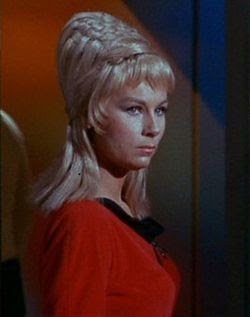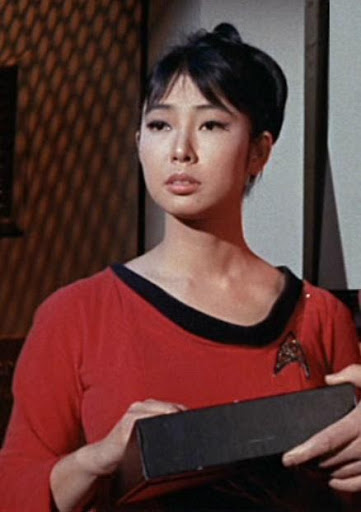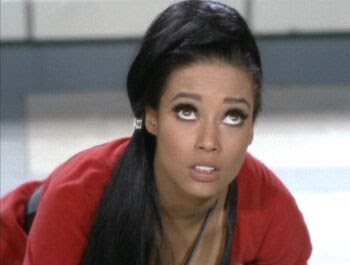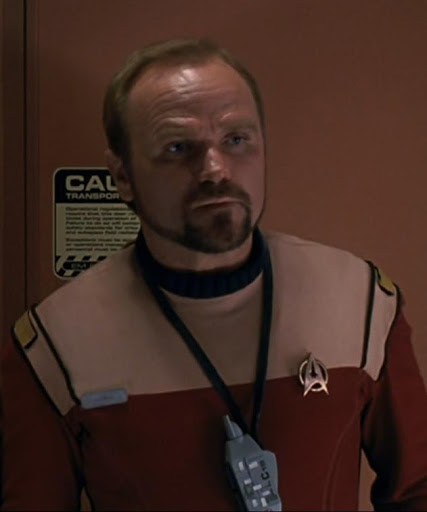Back in 2016, the First Four recorded an episode discussing the incomparable Janice Rand. As always, the crew took a critical and objective look at the character’s importance on the Enterprise and in the Trek universe. Such an examination begs the question, what happened to yeomen in Starfleet?
Historically, a yeoman’s role consisted mostly of clerical work and administrative tasks, and crewmembers in this position were usually assigned to high-ranking officers. If yeomen are support personnel, why did we stop seeing them past TOS? One could argue that computation capabilities had advanced significantly by that point, but who is accessing and operating those consoles?
Because the shows focus primarily on senior staff members, the fandom tends to forget about all of the necessary components required to power starships. We place more importance on rank and seniority and almost never include support staff when we list our favorite characters. But now that Lower Decks has portrayed the lives of low-ranking crewmembers, focus has begun to shift away from the glamorous lives of senior officers and place it on the importance of strong teamwork below the bridge. To assert that Kirk’s Enterprise and her crew of 428 people need a staff of yeomen but the Enterprise D and a crew ranging anywhere from 1,000 to 6,000 people somehow didn’t, is a bit absurd.
Archer may not have needed a yeoman as those NX ships were compact both in design and functionality, but the need for one evidently arose by the 2260s. Surely Picard could have used an extra set of eyes regarding the paperwork associated with commanding a ship the size of the Enterprise-D. When the Dominion War was in full swing, Sisko certainly needed a yeoman if he was splitting his time between station duties, acting as a religious figurehead for the Bajorans, and serving as an adjutant to Admiral Ross. Janeway may have had a small ship and smaller crew, but half of which were former Maquis. The probability that all of them had skills required for ship operations is dubious at best. Who’s to say there wasn’t a Maquis who knew nothing of warp core dynamics or repairing phaser arrays that needed a job?
Positions like yeoman and ship’s counselor may seem superfluous, but support staff are always crucial to large-scale projects. Always. There are hundreds of examples of this, from theatre productions to weddings, from on-boarding a new employee to political campaigns – all of which function best when there is support personnel. The most complex operations usually go best when there’s an individual or a team dedicated solely to minding the “behind-the-scenes” work, and operating a starship is no different.
Realistically, Starfleet Command would have benefitted from a division of Personnel Officers, whose main responsibilities were to the occupational success of their commanding officers. Whether they were stationed on a remote starbase or a flagship vessel, yeomen were capable of alleviating their COs some of the more tedious and time-consuming work.
It’s interesting to note that the yeomen named in the franchise were mostly women, insinuating that assignment qualifications needed to perform the clerical responsibilities of a starship were gender-based. Yeomen Rand, Zahra, Barrows, and Tamura are examples of this. The few male yeomen that we know of, Burke and Samno, ended up murdering some important Klingons on the clock. Although the thankless, grueling “secretarial” work of a yeoman may seem gender-coded by today’s standards, perhaps some occupations are best left to women after all.




Maybe I’m just looking too deep into this, but I always assumed Yeomen became unnecessary as the Federation’s AI technology got more and more advanced. You mentioned that someone still needs to access the consoles… but do they, when the bridge staff can just tell the ship itself to “bring it up on screen”, or “make it so”?